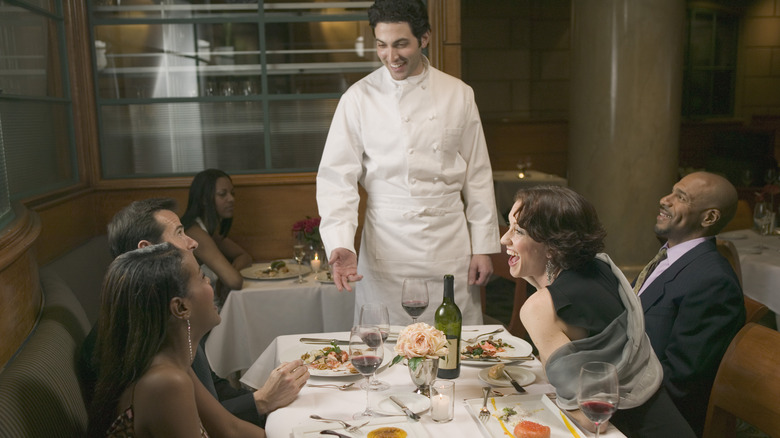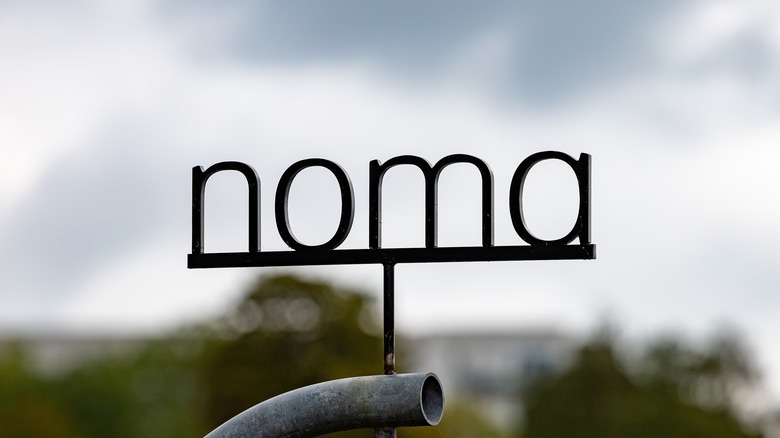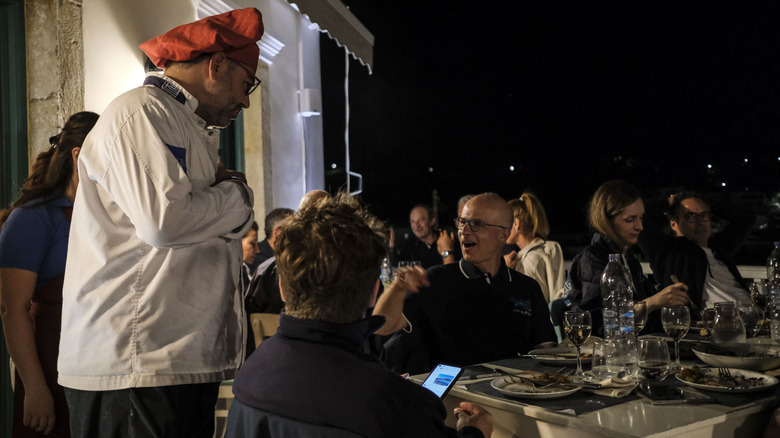How Noma Changed The Way Diners Interact With Chefs
With its months-long waiting list and an endless number of prestigious culinary awards, the multi-course Michelin-starred restaurant Noma, spearheaded by chef patron Rene Redzepi, revolutionized much of the fine dining industry (per The Staff Canteen). The restaurant served unique dishes like celeriac shawarma and grilled reindeer heart per the Financial Times, but despite its unrivaled unique meals and general successes, the restaurant is now having to close after almost 20 years in business. Chef Redzepi said the reasoning behind the closure was not for lack of enthusiasm, but for the "unsustainable" nature of fine dining (per The New York Times). As he puts it, fine dining requires very long hours, and despite the hefty price tags of Noma's meals (sometimes upwards of $750), Redzepi still was not able to pay his chefs a fair enough wage. Luckily for those that are fans of Noma, the restaurant will not be gone forever as the chef plans on opening up special pop-ups in the years to come.
Noma has topped lists multiple times as one of the best spots to get a meal in the world (per The Guardian) and has left a legacy in fine dining for its many influences. But one of the most long-lasting of these influences is how the iconic restaurant changed the way diners interacted with chefs. But before we dive into that, let's talk about how else Noma will be remembered.
What made Noma so influential?
Chef Redzepi and his team of chefs working at Noma were not afraid of a challenge and were known to be highly experimental with their courses. According to CBS News, Chef Redzepi made it a point to only cook with what was in season, and since he was working with the unpredictable climate of the Nordic countries, it was a challenge. Redzepi often employed the help of foragers to find new flavors for his creations, and this level of creativity meant dishes like live ants with yogurt and fried reindeer moss made it onto some menus. These unique meals became culinary marvels around the world and did wonders for the restaurant scene in Copenhagen, taking patron's eyes off of the chefs in places like Italy and France and bringing them to Copenhagen instead.
Per The Guardian, another one of Noma's biggest contributions to fine dining is that it revitalized nordic cuisine as a whole, meshing techniques both modern and traditional to get unique flavors like never before. But while Noma changed the restaurant industry in a number of ways like these, one of its longest-lasting and most universal influences has been the shift in tradition it introduced in the relationship between diner and chef.
The best thing Noma introduced to the restaurant industry
According to chef Eneko Atxa, one of the biggest influences Noma and chef-patron Rene Redzepi made was bringing chefs out of the kitchen and into the dining room (via CNN). The concept was revolutionary at its onset in 2003, when Noma first opened (per The Caterer), but has since become a beloved concept.
According to The Staff Canteen, Noma cultivated a very open space for culinary lovers, and chefs bringing their creations directly to guests was a big part of that culture. The simple switch has left a lasting impression on chefs around the globe and has changed both the way chefs interact with guests and how customers engage in the restaurant experience.
As to why it's truly been important for the restaurant industry, chef patron Richard Bainbridge put it nicely. "I truly think it is great for the customers because they have direct contact with the person who has cooked their food. No one has more passion for the food the customer is about to eat than the person who has cooked it. They have been on a journey with that plate of food from start to finish," he said (via The Caterer). Chefs can see the influence their creation has on guests, and patrons are privy to an extra special experience by being able to see the passion of the chef right in front of them. That's just one of the many things Noma will be remembered for.


